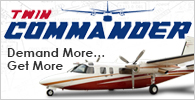What do the four rowdy reptiles have in common with 12 mainstream turboprops? Each hero on the half shell represents a distinctive attribute, same as our turbine platforms. Some say surviving the volatility of 2014 took ninja turtle strength! Consider our stressed global economy reeling from falling crude prices, the EU’s financial gymnastics, Russia’s downward spiral and Asia’s unpredictability, all of which affected our turboprops. Who better to call than Leonardo, Michelangelo, Raphael, and Donatello to save the day?
Once again we’re tracking eight mainstream twin turboprops and four mainstream singles to compare and analyze their stability and longevity in the marketplace. We continue to scrutinize total production, active fleet, and registry. For our annual 4th quarter report we also compare aircraft data with 4th quarter 2013 to more clearly define trends from 2013 to 2014.
Twin-Engine Turboprops
Piaggio Avanti: Depending upon the quality of your tea leaves, Piaggio produced 9 airframes in 2014 and saw a worldwide active fleet increase of 19 aircraft, due in part to the return to service of several deregistered platforms.
Piper Cheyenne: Four Cheyenne airframes were lost worldwide, and its migration to international registries is news as well. The U.S. active fleet has declined four percent since 2013, from 386 to 371 aircraft. In contrast, international registries gained 11 airframes to total 385, an increase of 3 percent. The Cheyenne continues to be a popular choice of niche operators who use them as front-line air ambulances or utility charter platforms.
Cessna Conquest: Two aircraft were stricken from the registry in 2014, leaving 514 airframes worldwide.
Beech King Air: Overall, numbers show a reduction of the King Air 90’s U.S. active fleet and robust growth overseas. The 90 series enjoys an increasing list of performance-enhancing STCs. New-production King Air deliveries outpaced all other turboprops except the single-engine Caravan. Global demand for the large-body King Air 350 remains strong, yet U.S. deliveries exceeded international deliveries by more than two to one.
Mitsubishi MU2: Swearingen Merlins and Mitsubishi MU-2s remain workhorses, although four Merlins and 14 MU-2s left the registry in 2014.
Twin Commander: Twin Commander continues to experience a gradual fleet depletion with two airframes lost in 2014. Just like the Cheyenne, the news here is the constant migration from U.S. to international registries. A net shift of 25 airframes leaves 280 registered in the U.S. OEM and service center support remains robust.
Single-Engine Turboprops
Cessna Caravan: Cessna produced 314 Caravans in 2014, more than the three remaining new-production singles in this class combined. In fact, Caravan production exceeded all King Air production in 2014. As has been the norm, international deliveries outpaced domestic deliveries at a rate of 5 to 1. The Caravan is rapidly becoming the King Air of single turboprops, with more uses and STCs available than ever.
Piper Meridian: Piper’s light single remains the entry turboprop of choice, with U.S. deliveries favored at a 3-to-2 rate. With that title comes a high frequency of owner-flown accidents –– 13 in the NTSB database, from an active fleet of 562 aircraft.
Pilatus PC12: The PC12 shows continued strong U.S. demand, with 98 percent of 2014 deliveries going to this country. Air ambulance and utility configurations are increasingly popular.
TBM: In spite of a few high-profile accidents and disproportionate owner-flown losses in 2014, the TBM single remains a popular owner-flown option.
To describe our venerable turboprops continued popularity, we need look no further than our ninja friends’ technically astute adjectives such as bodacious, radical, righteous, and tubular. You may use different adjectives or come to different conclusions about these fleet facts. Feel free to contact me for vigorous debate at 555-NINJA-TURTLE
 Dale Barnard, NationAir’s Twin Commander Program Manager, actually can be reached at 360-635-8008 or [email protected]. Tom Surgalski, NationAir’s Claims and Safety Advisor, contributed to this column.
Dale Barnard, NationAir’s Twin Commander Program Manager, actually can be reached at 360-635-8008 or [email protected]. Tom Surgalski, NationAir’s Claims and Safety Advisor, contributed to this column.




